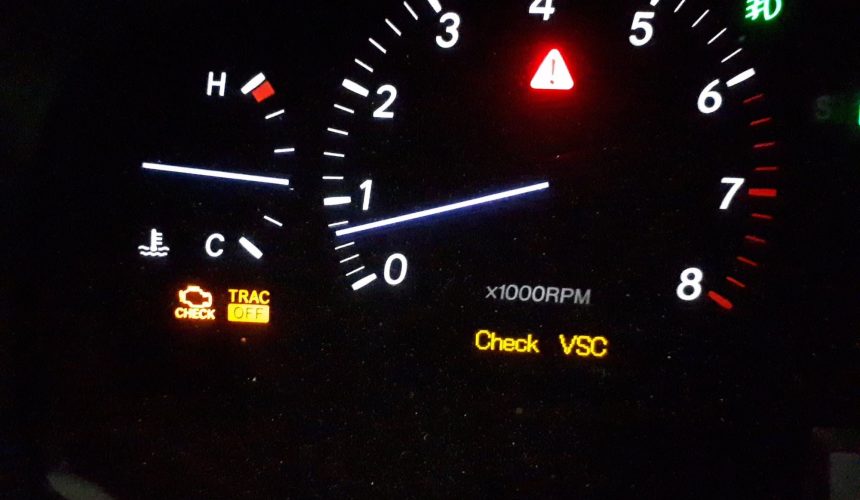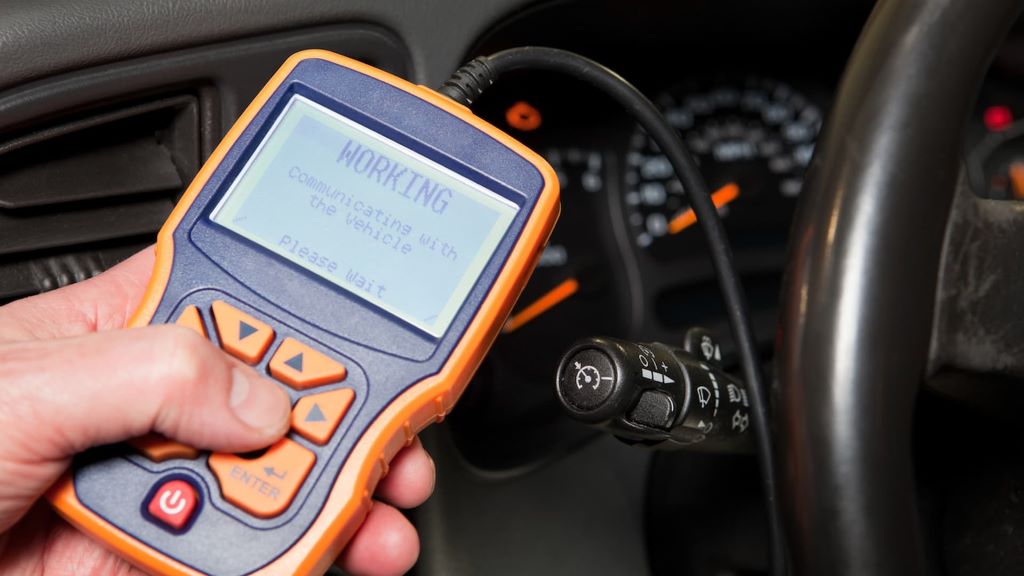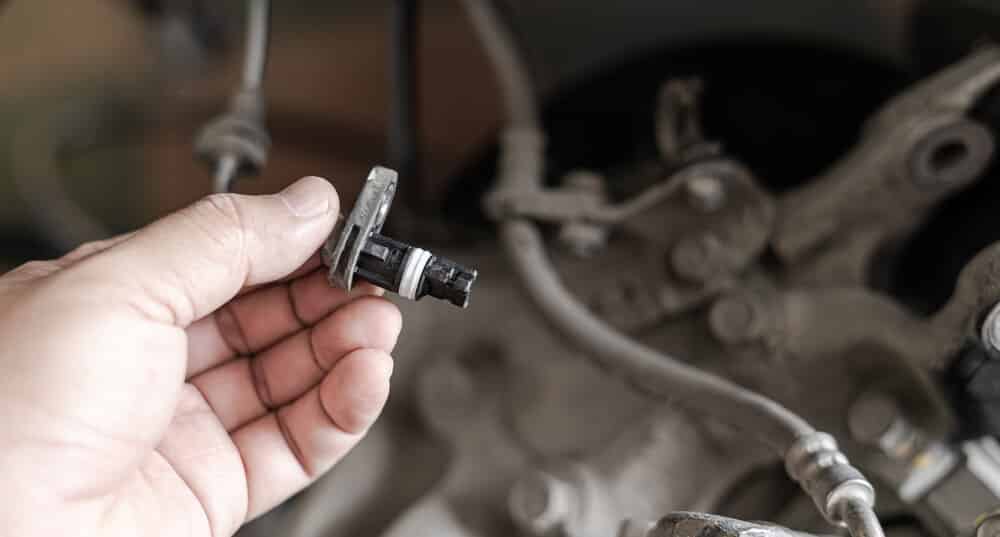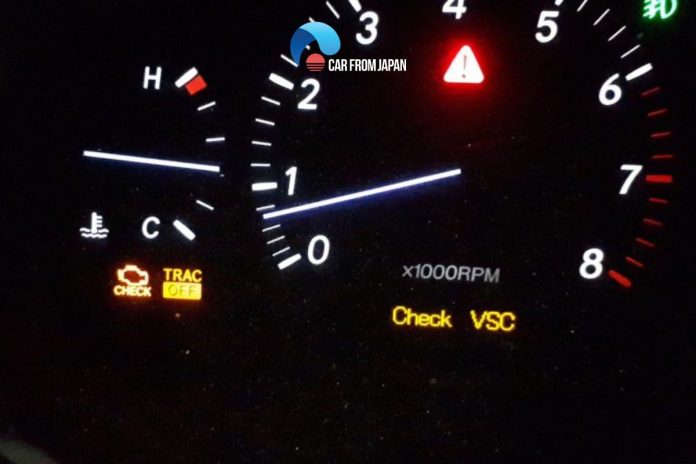The Check VSC in Lexus, short for Vehicle Stability Control, is an indicator that can be found on the dashboard of both Toyota and Lexus vehicles. Its purpose is to assist drivers in maintaining control and stability during different driving situations.
Nevertheless, if you notice the VSC light illuminated on your dashboard, it may indicate an issue with the system that could potentially impact the safety and performance of your vehicle.
Contents
- What Does The Check VSC in Lexus Mean?
- How To Reset Check VSC In Lexus
- What Triggers The Illumination of The VSC Warning Light?
- How To Resolve The Check VSC in Lexus Issue
- FAQs on Check VSC In Lexus
- Can I continue driving with the Check VSC light on?
- Can I reset the Check VSC light by disconnecting the battery?
- Do I need specialized tools to reset the Check VSC light?
- Can I reset the Check VSC light myself, or should I seek professional help?
- How can I prevent the Check VSC light from coming on in the future?
- Is resetting the Check VSC light covered under warranty?
- Final Words
What Does The Check VSC in Lexus Mean?
The Check VSC system light in your Lexus serves as an indicator for the Vehicle Stability Control system. This system is designed to assist drivers in maintaining control and stability in various driving conditions, including slippery roads, tight turns, and sudden stops.
It accomplishes this by utilizing sensors to monitor changes in the vehicle’s speed, direction, and steering input. When necessary, the VSC system adjusts engine power and applies the brakes to help the driver retain control of the vehicle.
When the “Check VSC” light illuminates on your dashboard, it signifies that the VSC system has been disabled or is not functioning correctly.
This issue could stem from a malfunction within the VSC system itself or related components.

How To Reset Check VSC In Lexus
To reset the VSC light on your Lexus, you can follow these steps.
Turn off the engine
Before attempting to reset the VSC light on your Toyota or Lexus, it’s essential to ensure that your vehicle is safely parked, and the engine is completely turned off.
This includes making sure the ignition is in the “off” position and the key is removed from the ignition switch.
Locate the diagnostic port
To embark on the VSC light Lexus reset procedure, you’ll need to locate the diagnostic port, which is typically situated beneath the dashboard on the driver’s side of the vehicle.
This diagnostic port is a rectangular-shaped interface with numerous pin connectors. Take a moment to familiarize yourself with its exact location, as it’s a pivotal point for this process.
Connect the OBD-II scanner
Now, it’s time to establish a connection between your vehicle’s diagnostic system and an OBD-II (On-Board Diagnostics) scanner.
The OBD-II scanner is a specialized device designed to communicate with your car’s computer system. Insert the OBD-II scanner’s plug into the diagnostic port securely, ensuring a firm connection.

Clear the error codes
With the OBD-II scanner successfully connected to the diagnostic port, the next step involves clearing the error codes associated with the VSC light.
The scanner will prompt you through this process, which essentially involves instructing the vehicle’s computer to erase any stored fault codes or data related to the VSC system.
Turn off the scanner
After you’ve effectively cleared the VSC-related error codes, it’s crucial to power off the OBD-II scanner.
Follow the scanner’s instructions to shut it down properly, and then disconnect it from the diagnostic port. Safely stow away the OBD-II scanner for future use or diagnostics.
Start the engine
To confirm the success of the VSC engine light Lexus reset, start your vehicle’s engine. Allow it to idle for a moment and carefully observe the instrument panel.
Verify that the VSC light, which previously illuminated, has now been extinguished.
Should the VSC light persistently remain illuminated after following these steps, it could indicate a more complex underlying issue within the VSC system.
In such cases, seek professional assistance or consult your vehicle’s user manual for further guidance.

What Triggers The Illumination of The VSC Warning Light?
Identifying the root cause of the VSC warning light coming on is crucial for determining the appropriate steps to address the issue. Here are some common factors that can lead to the activation of the VSC light.
Dysfunctional wheel speed sensors
The VSC system heavily relies on wheel speed sensors to detect alterations in the vehicle’s speed and direction. If any of these sensors malfunction, it can trigger the illumination of the VSC warning light.
Brake system issues
A malfunction in the brake system can be a culprit behind the VSC light turning on. This can result from low brake fluid levels, a malfunctioning brake booster, or damage to the brake actuator.
Flawed steering angle sensor
The steering angle sensor plays a pivotal role in the VSC system. If it encounters a malfunction, it may lead to the activation of the VSC warning light.
Damaged or disconnected wiring
Any compromised or disconnected wiring within the VSC system can be a potential cause for the warning light to illuminate.
VSC control module failure
In rare instances, a failure in the VSC control module can be responsible for triggering the VSC warning light.
It is essential to address the underlying issue promptly and accurately to ensure the continued safe operation of your vehicle.

How To Resolve The Check VSC in Lexus Issue
When the VSC light illuminates on your dashboard, it can be caused by various factors. The steps to address this problem depend on the underlying issue.
Beside from a tutorial how to reset check VSC in Lexus, here’s a guide on how to resolve the VSC light concern.
Inspect the brake system
The VSC system is closely tied to the vehicle’s braking system. If your brakes are worn or if there’s a malfunction in the brake system, it can trigger the VSC light.
Carefully examine the brake pads, rotors, and brake calipers for signs of wear or damage. If needed, replace these brake components.
Check the wheel speed sensors
Wheel speed sensors are critical to the VSC system, as they detect wheel slippage. If one or more of these sensors are malfunctioning or dirty, it can activate the VSC light. Clean the sensors and inspect them for any damage!
Verify the Steering Angle Sensor
The steering angle sensor plays a pivotal role in the VSC system, as it detects the steering wheel’s position and assists in maintaining vehicle control.
If this sensor is damaged or misaligned, it can trigger the VSC light. Attempt to recalibrate the steering angle sensor or replace it if necessary.
Examine the Yaw Rate Sensor
The yaw rate sensor measures the vehicle’s rotational movement, aiding the VSC system in maintaining stability. If this sensor is dirty or malfunctioning, it can cause the VSC light to illuminate.
Clean the sensor and inspect it for damage. If it’s damaged, you’ll need to replace it!
Inspect the VSC Module
If none of the above steps resolve the issue, there might be a problem with the VSC module itself. This module controls the VSC system, and a malfunction can trigger the VSC light.

You can attempt to reset the module by disconnecting the vehicle’s battery for a few minutes. Alternatively, consider seeking professional assistance from a mechanic for further diagnosis and repair.
FAQs on Check VSC In Lexus
Can I continue driving with the Check VSC light on?
While you can technically drive with the Check VSC light on, it’s not advisable.
The warning light indicates a potential safety issue, and inspecting your vehicle as soon as possible is the best act to ensure safe driving conditions.
Can I reset the Check VSC light by disconnecting the battery?
Disconnecting the battery may temporarily clear the warning light, but it won’t address the underlying issue. The light is likely to come back on if the problem persists.
Do I need specialized tools to reset the Check VSC light?
Resetting the Check VSC light may require an OBD-II scanner or diagnostic tool to clear any stored error codes and reset the system.
It’s advisable to consult your vehicle’s manual or a professional mechanic for the proper procedure.
Can I reset the Check VSC light myself, or should I seek professional help?
While you can do some basic troubleshooting, it’s often best to consult a qualified mechanic or technician.
They have the expertise and tools needed to ensure a proper reset and repair.
How can I prevent the Check VSC light from coming on in the future?
Regular vehicle maintenance, including checking and maintaining the VSC system components, ABS system, and sensors, can help prevent the Check VSC light from coming on unexpectedly.
Additionally, safe and cautious driving can minimize wear and tear on these systems.
Is resetting the Check VSC light covered under warranty?
Whether resetting the Check VSC light is covered under warranty depends on the specific terms and conditions of your Lexus warranty.
You should consult your vehicle’s warranty documentation or contact the dealership for clarification.
Check out this video from to get more details on how to fix reset your Check Engine, VSC light in no time!
Final Words
In conclusion, knowing how to reset check VSC in Lexus is essential. Resetting this VSC system can be a straightforward process in general if you follow the steps outlined in our comprehensive guide.
While the Check VSC warning light can be unsettling when it appears on your dashboard, it’s important to remember that it often indicates minor issues that can be resolved without the need for extensive repairs.



